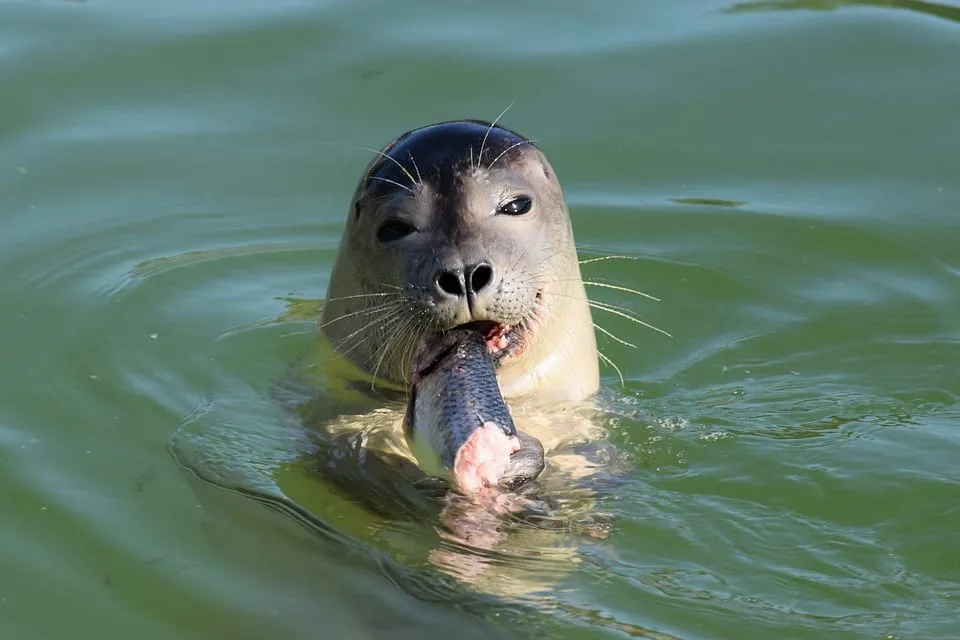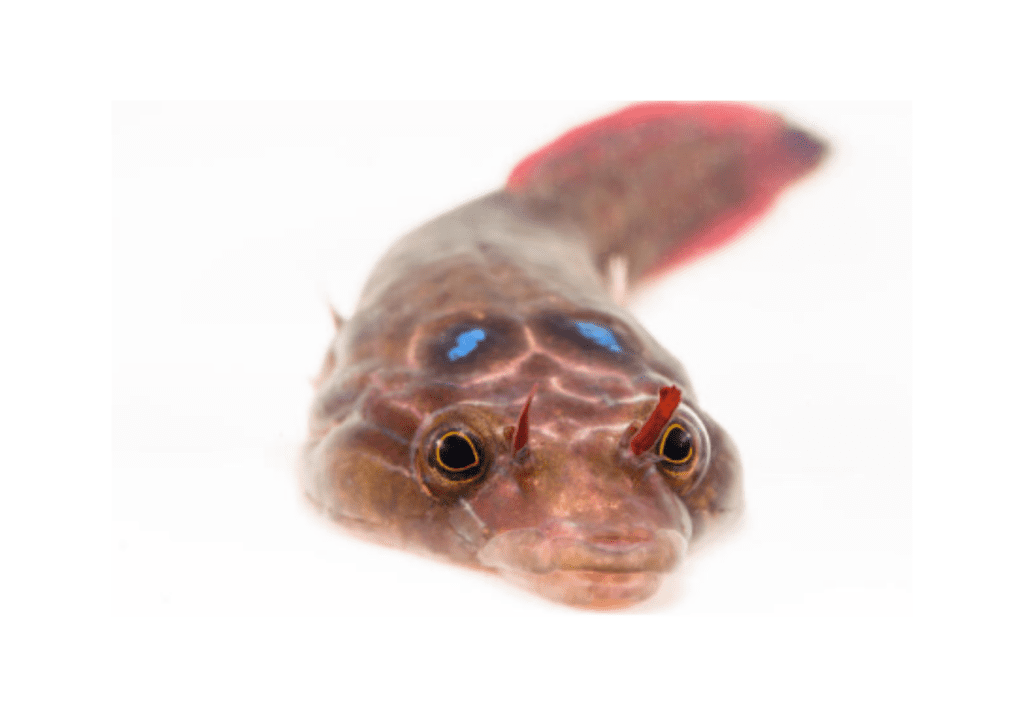Puffins (or Fratercula Arctica to give them their scientific name) are loved for many reasons, but perhaps mostly because of their rotund figures, black and white ‘tuxedo’ markings, and toddler-like amble on land. Sometimes known as ‘sea parrots’, their brightly-coloured bills make them easily recognisable for anyone who knows the best time of year to spot puffins around UK coastlines.
Join us as we explore the puffin season UK, and how to quietly observe these beautiful vulnerable seabirds without disturbing their nesting habitats.
When is Puffin Season in the UK?
Puffin season in the UK typically spans from late March to late July which is when puffins return to their nesting sites along the coastal cliffs, islands, and rocky shores of Britain. Puffins spend most of their lives at sea, only coming inland during the spring and summer months to form breeding colonies. Their arrival heralds the arrival of warmer weather when birdwatchers and nature enthusiasts alike excitedly gather to discreetly watch these birds fishing in the sea and tending to their burrows.

Puffin Breeding Season UK
Puffin breeding season in the UK offers a rare opportunity to witness these curious seabirds as they come inland to nest. Male puffins can live to 25 years or more and return to the same clifftop year after year to reunite with their mate. Courtship rituals play a vital role in pair bonding, with male puffins engaging in elaborate displays to attract potential mates. These displays may include bill tapping, bowing, and the offering of gifts such as fish and sand eels.
Where do Puffins Go During Breeding Season?
Whilst puffins usually spend most of their time out at sea, during puffin breeding season in the UK (late spring-early summer) they come inland to mate and prepare their burrows. Puffins are burrow-nesting seabirds and excavate their nesting burrows in soft, sandy soil or among rocky crevices along coastal cliffs. The construction of these burrows is a labour-intensive process, with both male and female puffins contributing to burrow digging and maintenance.
Burrows serve as essential shelters for incubating eggs and raising chicks away from the watchful eye of predators. Puffin burrows offer protection from the elements and can extend several feet underground, with nesting chambers at the end where eggs are laid and chicks are reared.
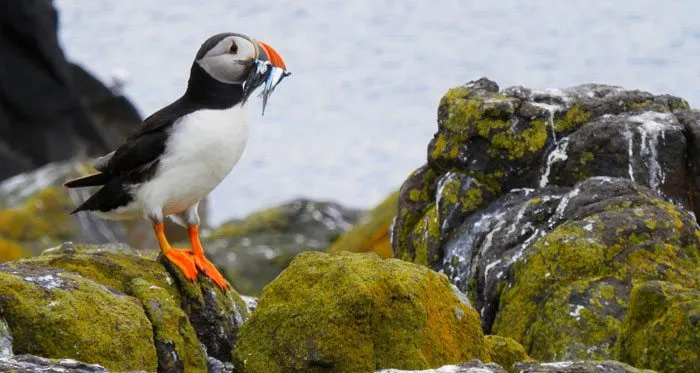
Once eggs are laid, typically one or two per clutch, both parents take turns incubating them for approximately 40 days. During this incubation period, the parents maintain a strict nesting schedule, with one bird incubating the eggs while the other forages for food at sea.
Upon hatching, puffin chicks (or ‘pufflings’ as they are known!) are initially helpless and rely entirely on their parents for warmth and nourishment. Both parents participate in feeding the chicks, regurgitating a diet of small fish, such as sand eels and herring, into their hungry beaks.
After several weeks of attentive care from their parents, pufflings begin to develop their flight feathers and strengthen their wings in preparation for fledging. Once sufficiently developed, the chicks take their first tentative flights from the safety of the burrow, guided by instinct and encouragement from their parents.
Upon fledging, young puffins venture out to sea, where they will spend the next few years of their lives before returning to their natal colonies to breed. This cycle of reproduction and dispersal ensures the continuation of puffin populations and perpetuates the timeless spectacle of puffin breeding season along the coastlines of the United Kingdom and beyond.
Top Locations for Puffin Watching in the UK
There are several locations for puffin watching in the UK and if you time it right and are discreet, you can watch these beautiful seabirds as they busily burrow on the clifftops around UK shores.
We are lucky to have the thought to be Cornwall’s only remaining puffin breeding colony on our doorstep, with an island locally known as “Puffin Island” just off Padstow. We offer puffin boat trips from beginning of May to early July which is the best season for puffin sightings – the mornings are the best time to see the puffins bob on the water between dives for sand eels, flying at speed past the boat or popping out of their nesting burrows.
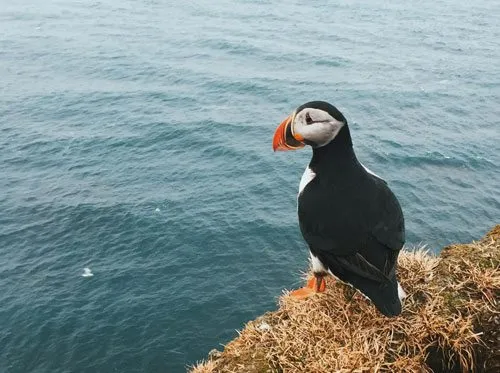
With their rugged cliffs and windswept shores, The Scottish Isles also offer a haven for spotting puffins during the breeding season. Places like the Isle of May, the Treshnish Isles, and the Shetland Islands are renowned for their bustling puffin colonies.
Wales too boasts its fair share of puffin colonies, particularly on islands like Skomer and Skokholm. These tranquil sanctuaries provide an idyllic backdrop for observing puffins in their natural habitat during breeding season.
Lundy Island off the coast of Devon also has a collection of vibrant puffin colonies and makes a great spot for spotting these beautiful seabirds in puffin breeding season. Lundy Island (which means ‘Puffin Island’ in Norse) is designated as a marine conservation area where fishing is prohibited, making it an ideal habitat for these charming birds.
Puffin Boat Trips
A puffin boat trip is a fantastic way to experience thought to be Cornwall’s only remaining puffin colony just off the coast of Padstow. We’re very mindful of not disturbing these birds, so once we approach “Puffin Island”, we’ll slow down and remain on board so we can take time to watch the puffin colony in all its glory. Our guide will give you insights into the behaviours on display and you can see them as they busily go about their day catching fish and tending to their burrows. It’s exhilarating and interesting, and the best way to see Cornwall’s puffins!
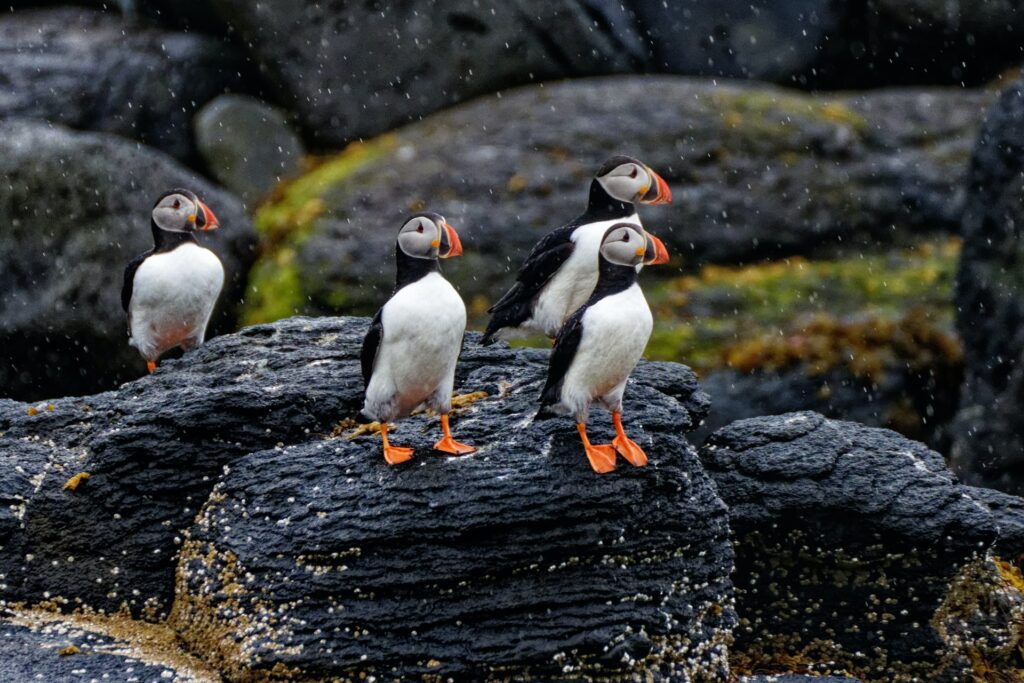
While the allure of observing puffins up close during puffin breeding season is undeniable, we always take great care to prioritise the well-being of these remarkable birds above all else. Many puffin populations face threats from habitat loss, food shortages, and climate change, making them particularly vulnerable during the breeding season. By remaining at a respectable distance and observing quietly, we can play a vital role in protecting puffin populations and supporting ongoing conservation efforts.
Your knowledgeable guide aboard our boat trips will be happy to answer any questions you have and you will have ample opportunity to snap some great photos of the puffins and the rugged coastline where they dwell.
Summary
While the allure of observing these seabirds during puffin season in the UK is undeniable, we always take great care to prioritise the well-being of these remarkable birds above all else. Many puffin populations face threats from habitat loss, food shortages, and climate change, making them particularly vulnerable during the breeding season. By remaining at a respectable distance and observing quietly, we can play a vital role in protecting puffin populations and supporting ongoing conservation efforts.
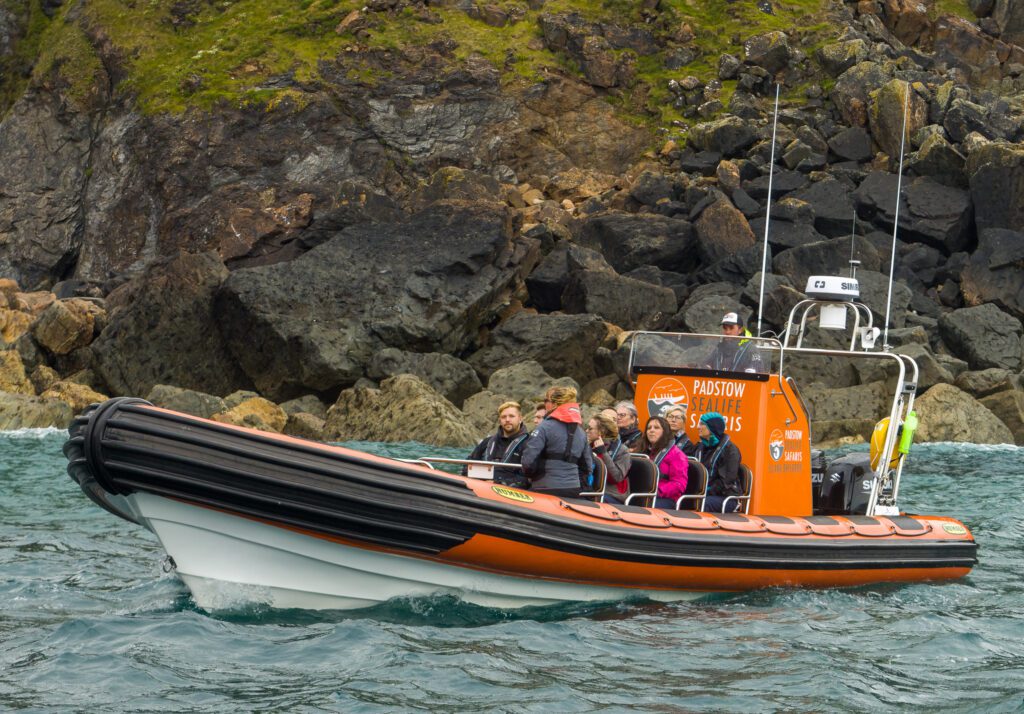
FAQs
How Long Does Puffin Season Last?
Puffin season in the UK runs from late March to late July when puffins come inland to nest and breed.
Are There Any Tours Available for Puffin Watching?
Here at Padstow Sealife Safaris, we offer puffin island boat trips where you can see these amazing birds as they swoop and burrow along the Cornish coastline.
Where Do Puffins Migrate?
Puffins are known to inhabit a wide range of areas across the North Atlantic, from the coastlines of northern Europe and the British Isles to the shores of North America. They can be found as far north as the Arctic Circle and as far south as the coast of New England in the United States.
Where To See Puffins in Cornwall
Thought to be Cornwall’s only remaining puffin colony can be found just off the coast of Padstow on Cornwall’s North coast.
